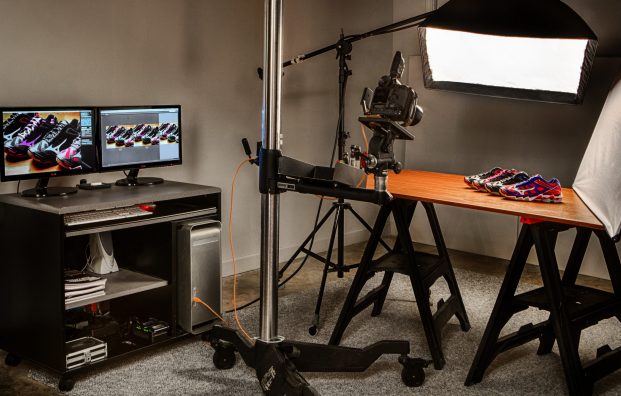
Hunt’s Photo and Video had Photo Education’s Paul Nelson and Tether Tools’ Liz Boettcher the opportunity to introduce tethered photography and how it can benefit your workflow, including a discussion of the various methods and programs available for tethering. They also had a live demo where they took images while tethered to see how this workflow works. Let’s go over a few points this webinar went to demystify what tethering is all about.
What is Tethering?
Tethering is the connecting of a single device to another device. The term tethering encompasses the actual connectivity of digital devices as well as the integration and mounting of these devices. In the context of photo and video, both wired and wireless solutions may be used to transfer information (images, video) from your camera to another device.
What is Tethered Photography?
Images captured using a tethered photography workflow get saved directly onto your computer’s hard drive in the folder of your choice. Tethering software then displays the images on the larger computer or tablet screen as they are captured so you can see them clearly. In some instances, what we call tethering is sometimes referred to as Direct or Instant Image Transfer – this is how you will often find it listed in camera and software manuals.
Why is Tethering Important?
Tethering helps you get the perfect photo in fewer shots. Viewing images on a larger screen is a great way for you and your clients to spot issues with focus, lighting, posing or composition. You’ll spend less time editing and your clients can let you know the moment you’ve captured the shot they are looking for. From shoot to publishing, archival tethering speeds up the process in a major way.
The Benefits of Shooting Tethered:
- View images on a large monitor as you shoot
- Instantly see images at full resolution
- Control camera settings and remote trigger from connected device
- Share images with art director/client on site or remotely
- Collaborate more effectively with assistants, stylists and subjects

Wired vs Wireless
In the studio or in more controlled environments where the camera and computer will not move much, your best bet is to likely shoot using a wired connection. This way, the computer can be anywhere that’s comfortable for the client and the images transfer as fast as possible directly from camera to the computer. There’s almost no delay between firing the shutter and seeing the images on screen.
Cue wireless tethering. Less gear, more options! Wirelessly tethering means you don’t have to haul around a computer, you can comfortably move around while shooting, and if you have others on set they can easily pass the smartphone, tablet, or your device of choice to view images in detail. Our Air Direct Wireless Tethering System might be something you’d want to investigate if you’re interested in not being restricted to a cable.
When to Tether? Who Should Tether?
Photographers who shoot tethered realize these advantages every day. Photography is a very competitive field and shooting tethered provides an extra level of service that the clients will remember. The next time a job comes up and the client is choosing between two photographers who do you think they will pick? The photographer who shows them 2-inch previews on the back of their camera, or the one who provides a seamless shooting experience with instant viewing and editing capabilities?


